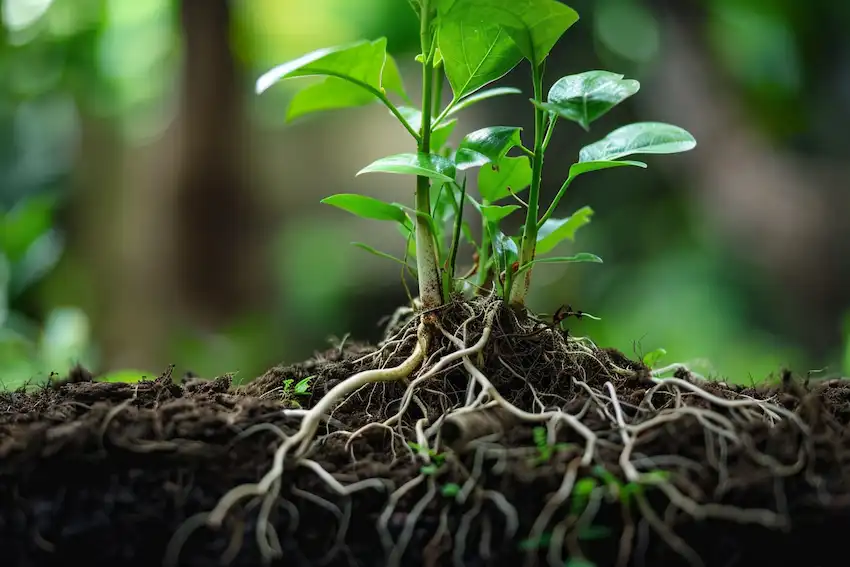The Ultimate Guide to Correctly Fertilizing Trees
Fertilizing trees is essential for their health and robust growth, but improper application can lead to wasted resources and even damage the tree. This guide provides a clear, step-by-step approach to ensuring your trees receive the right nutrients in the best way possible.
Understanding the Root System
1. Root System Overview:
- Key Points: The majority of a tree’s absorbing roots, including vital root hairs, are located outward from the trunk, often extending beyond the tree’s canopy (drip line). These roots are crucial for nutrient uptake.
Step 1: Assessing the Need for Fertilization
1. Soil Testing:
- Purpose: Identify nutrient deficiencies in the soil.
- Method: Obtain a soil test kit or consult a professional to analyze soil composition and nutrient levels.
2. Observation:
- Signs of Deficiency:
- Discolored leaves (e.g., yellowing or browning).
- Slowed growth or stunted development.
- Early leaf drop or other unusual symptoms.
Step 2: Choosing the Right Fertilizer
1. Type:
- Recommendation: Opt for a slow-release, granular fertilizer. This type provides a steady supply of nutrients over time.
2. Formula:
- General Guidance: A balanced N-P-K (Nitrogen, Phosphorus, Potassium) ratio is often ideal. However, adjust based on soil test results to address specific deficiencies.
Step 3: Proper Fertilization Technique
1. Where to Fertilize:
- Placement: Apply fertilizer to the area under the tree’s canopy and extending slightly beyond the drip line. Avoid placing fertilizer directly next to the trunk.
2. How to Apply:
- Broadcast Method:
- Evenly spread the granular fertilizer over the soil surface within the root zone.
- Fertilizer Wells:
- Procedure: Create shallow wells (4-6 inches deep) around the drip line.
- Application: Place the fertilizer in these wells to enhance nutrient penetration.
3. Watering:
- After Application: Water the area thoroughly to help the nutrients move into the soil where roots can absorb them.
- Cautions:
- Avoid water pooling around the tree trunk.
- Ensure proper drainage to prevent waterlogging.
Additional Tips for Tree Care
1. Watering Practices:
- Tree Trunk: Prevent water from touching the trunk directly. Use mulch or a dirt barrier to redirect water.
- Drainage: Ensure the soil around your trees drains well to avoid root rot.
- Irrigation: During dry or hot weather, irrigate frequently but avoid overwatering. Distribute water in installments if needed to prevent waterlogging.
2. Enhancing Soil Oxygenation:
- Tip: Adding hydrogen peroxide to irrigation water can improve soil oxygen levels, further supporting root health and nutrient uptake.
Conclusion
Correctly fertilizing trees involves more than just adding nutrients—it requires a thoughtful approach to ensure those nutrients are delivered effectively and support the tree’s overall health. By understanding the root system, selecting the right fertilizer, and applying it properly, you can enhance your tree’s vitality and growth. Always strive to support natural processes and create a sustainable environment for your trees.
Happy gardening, and may your trees thrive with every season! 🌳🍃
